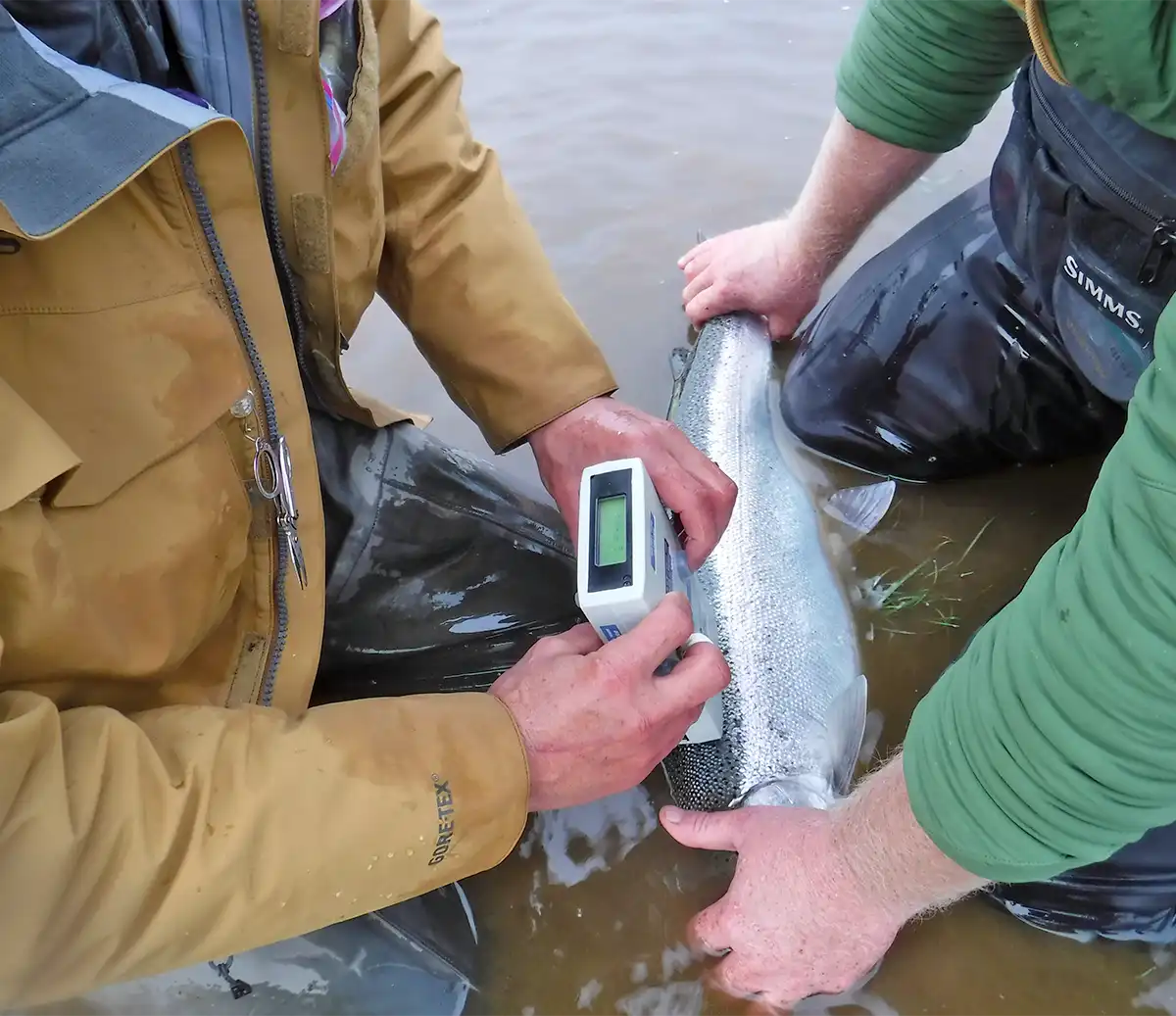Flyfishing for science… and the biggest, brightest steelhead that’ll ever grab your fly!
Kamchatka is home to Asia’s only population of the legendary steelhead, and the only way to legally target them is through a scientific research project… To participate you donate to the cause, then become a volunteer data collector with the job of trying to catch samples of the population, tag them, and then let them go unharmed. Not a bad job! And every cent you spend participating in Kamchatka Steelhead Project is fully tax deductible as a donation.
Steelhead are strictly protected under Russian law and spawn only in a handful of rivers draining westerly into Kamchatka’s Okhotsk Sea. Populations in three key rivers are very robust, and are the target of a unique Russian-American field project taking place each fall. Russian scientists, with the help and financial support of fly fishermen, work to monitor and ultimately protect a threatened race of strong, big-bodied steelhead in their isolated and completely pristine habitat. Through sponsorship of the Project, anglers fund the groundbreaking science and are in turn invited to join the expeditions as assistants to gather data on the fish – all of which are caught and released using traditional, non lethal fly fishing methods. For conservation-minded steelhead junkies with an extra ounce of adventure in their souls, there’s simply nothing comparable to traveling to the end of the Earth to feel the anvil-like headshake of a massive, fresh-from-the-sea, Russian steelhead that’s just grabbed your fly!
The Kamchatka Steelhead Project began in 1994 with funding from the US State Department and a charter under the US-Russian Agreement on the Environment. The KSP continues its mission today, offering something more important than merely an exotic fishing trip. This is a cultural and scientific exchange among like-minded anglers and scientists from both sides of the Pacific, whose common purpose is to understand and protect a creature with near-mythical strength and beauty.
 Today the Kamchatka Steelhead Project is jointly operated under the aegis of Moscow State University, the Russian Academy of Sciences, the Russian Federal Government, The Conservation Angler, and The Fly Shop®. Typically the Project organizes three 8 full fishing day expeditions taking place from the middle of September through the middle of October. Participating angler-sponsors assist Russian scientists in the collection of scale and tissue samples, and the tagging of all caught-and-released fish. This is more than a great fishing trip, it’s a worthwhile, accelerated learning course in sea-run fish at the elbow of experts.
Today the Kamchatka Steelhead Project is jointly operated under the aegis of Moscow State University, the Russian Academy of Sciences, the Russian Federal Government, The Conservation Angler, and The Fly Shop®. Typically the Project organizes three 8 full fishing day expeditions taking place from the middle of September through the middle of October. Participating angler-sponsors assist Russian scientists in the collection of scale and tissue samples, and the tagging of all caught-and-released fish. This is more than a great fishing trip, it’s a worthwhile, accelerated learning course in sea-run fish at the elbow of experts.
Through information collected from fly-caught steelhead during the life of the project, much has been brought to bear on our understanding not only of Asiatic steelhead but, by extension, their North American relatives. The edge of the sub-Arctic wilderness, and what it takes to get there, is not for everyone. But for those who are obsessed by the wild and the chrome, these rivers stand alone as a steelhead Mecca, in the purest, least impacted steelhead habitat left on the Earth.

Headed out on your next adventure with us? The Fly ShopⓇ has you covered. As a thank you to our travel guests, enjoy 15% off all retail purchases for a year! — the perfect chance to gear up before your trip.
Whether it’s flies, leaders, apparel or a new rod and reel outfit, we’ve got everything you need to make your journey more comfortable, more successful, and more fun. (some exclusions apply)















